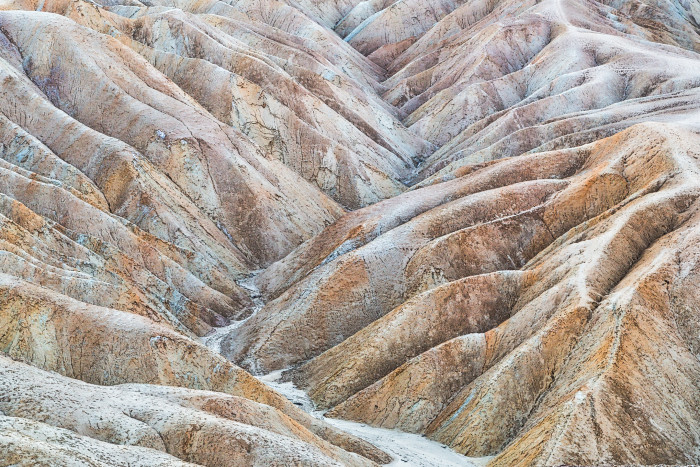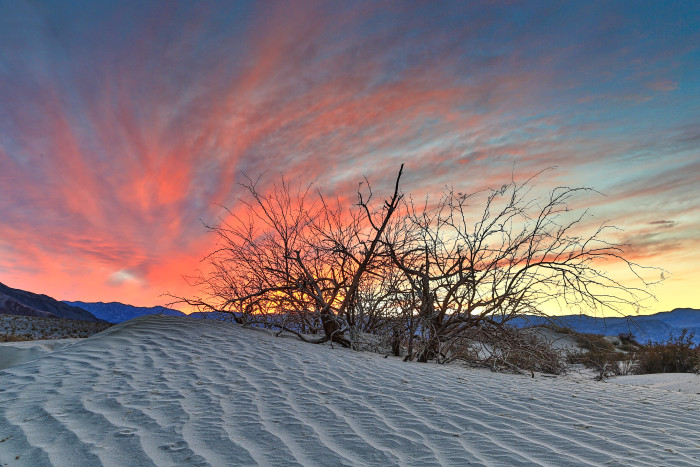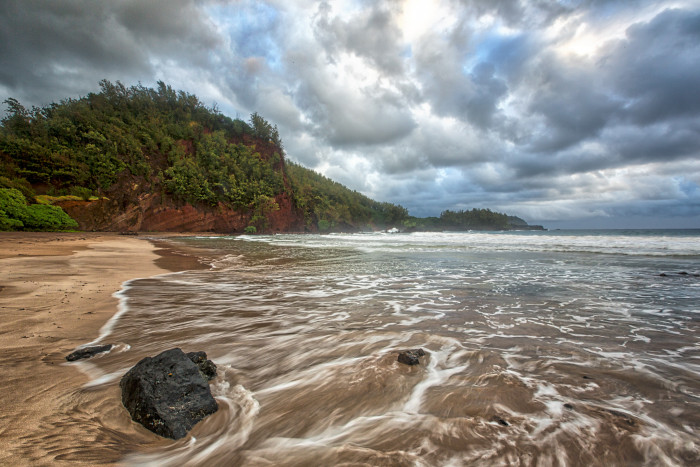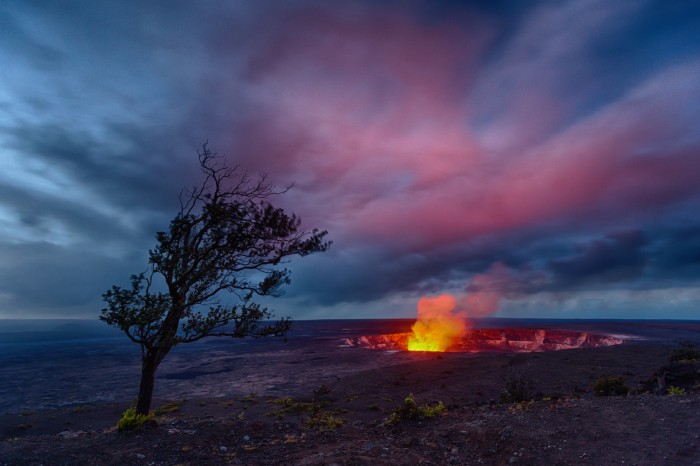Every time you go out to shoot landscape images you have options and choices as to how you make the photograph you want. I would like to demonstrate this concept by giving you an example of a shoot I did a few days ago.
I haven't had the chance to shoot a sunset close to my home in a few weeks. I live in El Dorado Hills, thirty miles east of Sacramento, the capital of the state of California. There are a handful of locations I have developed a liking to over the past few years, and depending upon the location of cloud cover and possible lighting options that may become available at any given sunset, I choose which one I think will be the best location for that particular evening's setting sun.
A couple of days ago I headed out to a location about a 15 minute drive from my home, a location that I had not been to for a sunset shoot in about two years. I had success previously at this location as can be evidenced by the two images shown below. What I like about this location is having the big tire on the side of the road that gives me something to place in the foreground, a vital element in a successful landscape image, as well as the quiet road that can provide a leading line into the setting sun.
Much to my surprise when I arrived at the location about 30 minutes before sunset, the tire and frame now had a directional sign that pointed traffic to a storage shed at the end of this road. I no longer had my foreground element next to the long and winding road leading into the setting sun. As you can see in the image below I did not think that the sign fit into the quiet pastoral scene that I came prepared to include in my composition.
This was not off to a good start, as it was close to sunset and I had no foreground element to use, and the twilight colors were getting ready to begin showing above the horizon in the next few minutes. So, I had some choices to make. Go home and call this shoot a bust, or find another foreground element that could enhance the image as I had originally intended. I did contemplate using just the leading line that the road provided but chose not to as it simply did not appeal to my artistic eye. I chose instead to climb a hill to the right of this road where I spotted a number of interesting rocks that had potential as foreground elements.
However, now I ran into a technical problem involving high dynamic range issues. The sky was very bright with the setting sun, and if I exposed for the sky the foreground was in total darkness, and if I exposed for the foreground the sky was overexposed and blown out. So, as a photographer you begin to go through your available options to solve such a problem, not uncommon when shooting landscapes. This is when, the more you know the more choices are available to you. Here is the list of options that I considered to solve this problem:
- HDR photography (High Dynamic Range) - this simply consists of shooting anywhere from three to seven images, or brackets one stop apart, and then using software to blend them into a single image with an even luminosity that accommodates evenly the bright sky and dark foreground. Most commonly used software to accomplish this feat are, NIK HDR Efex Pro, Photomatix Pro, and the recently released MacPhun Aurora HDR (Apple OS only).
- A Graduated Neutral Density filter is an effective tool to use in a situation like this, where you can handhold a 1-3 stop graduated filter to temper down a bright sky but allow unfettered light through to the foreground.
- Shoot two images, one exposed for the sky, and then one exposed for the foreground and blend these two images in post processing with the resulting images, in essence, using the best of the two exposed images combined into one.
It should be noted very importantly here that none of the above options are possible with a hand held camera. Your camera must be placed on a tripod to have any chance of success. While I have used HDR previously I am not a fan of the end result. It is just a personal preference and taste as an artist. I could have used a Graduated Neutral Density filter, which I tried but wasn't fond of the results, so I opted to use the method of blending two images. One exposed for the sky, with one exposed for the foreground. I have shown the two images below exactly how they looked as a RAW file from my camera, with no post processing.
As you can see the first image above has beautiful detail and color showing off the dramatic sky that was present that night. The image below shows the interesting colored rocks that I set up behind and all the available green rolling hills that is present in California in the spring after our annual rainfall season. After each shot I look check that the exposure details are correct and also check for sharpness before I am satisfied I have two usable files to take home.
The post processing consists of importing my images into Adobe Lightroom from my camera's memory card, into a file structure that I have set up in my computer and use to keep my images organized by date and location. I then select the two files in Lightroom, go to Photo>Open as Layers in Photoshop, and they then open in Adobe Photoshop as two separate layers, placing the sky image on top. Then set the foreground color as black using the tool bar on the left hand side, and Open Layer Mask next to the top image. Now select the Gradient Tool, and holding down the Shift key draw a line just above the horizon into the foreground and you end up with an image that combines the correctly exposed sections of both images. In other words, you end up with the best of both worlds!
To finish off the development of this image, I then used the MacPhun Intensify Pro plug-in to slightly enhance the details and color saturation, ending up with an image very close to what my eye saw that night, shown below.
In conclusion, it is important to always consider and realize as a photographer/artist, the numerous options and choices you have at your disposal in the field when it comes to composition and dynamic range. Next time you are faced with similar problems, carefully consider your various options and choices available to you. You will then be able to 'not just take a photograph, but make it' just like you saw or composed it in your creative mind.
Have fun shooting!











































































